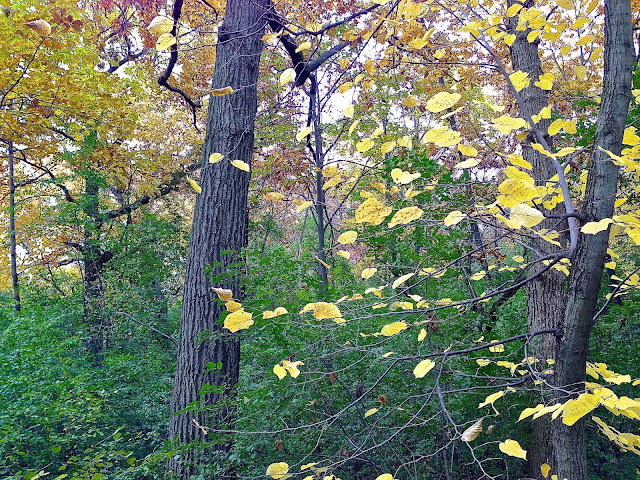Note: The following post is also the first post of a new blog called:
WOODS AND PRAIRIE - strategies for stewards
It's more technical (and less fun?) than Vestal Grove.
Please check it out and comment at: Strategies for Stewards ht
_______________________________________________________________________________
WOODS AND PRAIRIE - strategies for stewards
It's more technical (and less fun?) than Vestal Grove.
Please check it out and comment at: Strategies for Stewards ht
_______________________________________________________________________________
What Trees Should We Cut?
First, some rules of thumb:
Easy decision: In a real prairie, cut all trees. Prairie can’t grow under trees. No real tree is truly happy degrading a prairie.
Medium decision: In an overgrown but original savanna, cut enough trees of all kinds to get enough sun for enough grass for regular grassland burns. Probably best to cut some of all tree species, but try to save many young examples of the oak species best represented among the site’s oldest trees. In the long run, the fires will decide which trees will survive.
Hard decision: In an oak woodland, our burns will probably not be severe enough, under today’s controlled conditions, to kill mature invading trees. Thus we have to make God’s or evolution's choices ourselves. However unqualified and humble we are, there’s no alternative. If we want to conserve the vanishing oak woods biodiversity, we have to pick and choose.
Consider the degraded oak woodland shown below. Judging from the oldest trees (some of which predate Euro-american settlement by more than a century) the “original” dominant trees here were bur and white oak. Thus probably most biota that needs conserving here (e.g. invertebrates, fungi, bacteria) is part of an ecosystem sunny enough for reproduction of bur and white oaks.
What goes? First, of course, all the buckthorn (still green in this photo). Second, we’d cut at least 90% of the shadiest invaders including maple and basswood (yellowish wide leaves on the right).
We spare some elm in the wettest areas, where all the big ones seem to be. We cut most of the cherry (which one study found to be the most invasive canopy tree of the region’s oak woodlands). Box elder mostly goes. We stopped cutting large ash years ago, because they’ll all die soon of the emerald borer. But little ash won’t succumb to the borer for many years, and they make as much shade as buckthorn – so we cut the little and pole ash.
Some people are surprised by the oaks we cut. See that pole tree on the left – the dark-barked, branchless, youngster with its top already in the canopy? That’s a red oak. They’re fast growing and survive a lot of shade. Yes, they’re oaks, which some people assume makes them holy. But after cherry, they’re often the major pest in a long-unburned bur or white oak woods. Neither bur nor white can grow under the dense shade of red oaks. We usually don’t cut the big ones (good idea? bad idea?), but the pole reds go into the bonfire with the buckthorn.
In this second photo, we’re looking at a bur and scarlet oak woodland that’s been burned for 28 years. The buckthorn was everywhere as dense as it still is along the edge (the dark green slash across the middle of the photo). We left all the “native” trees when we burned (top-killed) the buckthorn and herbicided its re-sprouts.
Is what we have here now healthy enough? The three big trees are bur oaks. But there are no sapling bur oaks in the grove (although there are hundreds where sunlight is ample, around the edges). The pole trees in the grove are red oak, cherry, hickory, and basswood. Should we have cut some of them earlier? Probably. Should we cut some now, so we don’t end up with a bizarre forest of shade survivors? Yes, it seems about time.
Your comments are very welcome.
THE END
But one little added note on the herbs, for those interested. The main species we see here are elm-leaved and blue-stemmed goldenrod, wild coffee, purple Joe-pye-weed, and a little bit of rue anemone. This 5-acre prairie grove has more than 25 species of sedges and grasses and more than 100 species of woodland wildflowers. Many rare butterflies and mushrooms have been found. It’s off to a good start, I mean recovery.
Also, the photos in larger format, if you want to study them more closely:




No comments:
Post a Comment